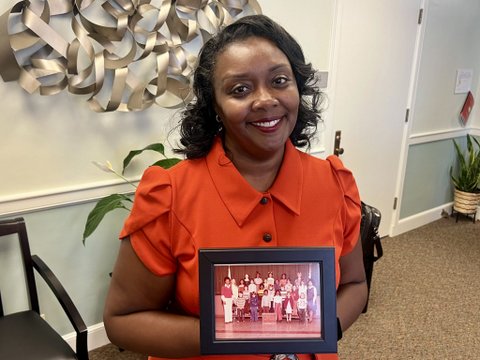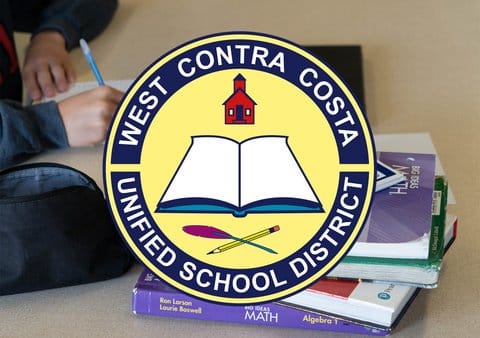
16 Sep EdSource: West Contra Costa Superintendent Seeks to Raise Reading Scores

(Photo by Catherine Hammond on Unsplash)
By Ali Tadayon
EdSource via Bay City News
Turning the tide on years of lagging elementary school reading scores at West Contra Costa Unified has become Superintendent Chris Hurst’s “No.1 priority.”
Hurst, in his third year as the district’s superintendent, says he is committed to improving elementary reading test scores by 5% each year, having reached the same goal during the 2022-23 school year. That goal is one of several in the strategic plan Hurst and his Cabinet have been developing to improve outcomes at the school.
“The research is very clear that once a student is behind, they typically will stay behind unless something significant happens in their K-12 experience that changes the trajectory of learning,” Hurst told EdSource. “So for me, literacy is a gatekeeper.”
In February, the district’s iReady assessment showed that only 42% of West Contra Costa Unified kindergartners, 26% of first graders and 39% of second graders were reading at or above grade level. Those scores were up from the previous year, according to a presentation Hurst made to the school board in April.
A history of low scores
Hurst said literacy scores at West Contra Costa Unified have been “stagnant for over a decade.” In the 2021-22 Smarter Balanced reading tests, 24% of third grade students scored below grade level; 56% tested near standard; only about 10% tested above standard. In the same year, the district’s scores from the Smarter Balanced tests for English language arts in reading and writing for grades three-11 were lower than 75% of other California districts.
Smarter Balanced results show that third grade reading test scores at West Contra Costa Unified have nearly steady since 2014, with no more than 17% of students reading above grade level. Similarly, only 18% of students in California scored above standard on reading; 57% statewide scored near standard, and 25% statewide scored below standard in 2021-22, the most recent year available.
Preliminary Smarter Balanced results for the 2022-23 school year show a slight uptick in English language arts scores: 33% of students in grades three-11 met or exceeded grade level, up 1 percentage point from the previous year, according to a district presentation at Wednesday’s school board meeting. Twelve of the district’s schools showed increases in the percentage of students who scored at or above grade level in English language arts.
West Contra Costa Unified serves mostly low-income students living in the cities of Richmond, El Cerrito and San Pablo. Before California adopted a universal free meal policy, 70% of the students qualified for free and reduced-price meals. Also, about a third of students in the district are English learners.
>>>Read: District Comes Up Short on Student Achievement Planning
Some data points on the iReady assessments last year are “hard to swallow” Hurst said. For instance, only 2% of fourth grade English learners were reading at grade level.
The superintendent said he was aware of the district’s low scores before taking the leadership position but was unaware of “how little and few resources we actually have here in West Contra Costa.”
Like other districts in the state with similar demographics, West Contra Costa Unified has grappled with high-cost programs straining its budget, despite receiving $4.2 million in state grants to improve literacy scores at seven of its elementary schools, as well as supplemental funds from the state for serving a high number of disadvantaged students.
“I really believe that my life has been about giving myself to a community, to work with the community to change outcomes for kids,” Hurst said. “And we need bold, passionate leaders to position ourselves to do that.”
The district will be using iReady and STAR assessments, to track its 5% growth goal; assessments will be done at various times throughout the year. At the Sept. 6 school board meeting, board President Demetrio Gonzalez-Hoy said those assessments provide a better picture of students’ reading abilities than the Smarter Balanced tests.
Meeting the goals
Meeting the superintendent’s goals would require the district to focus more on phonics instruction and increase its teacher training, Hurst said. The district will hold weekly meetings with staff, as well as informational sessions with the school board and the public, to develop a comprehensive literacy plan over the next year for implementation in the 2024-25 school year.
The WCCUSD board is demanding that the district pursue its goals with an equity focus and concentrate its efforts on four primary groups: African-American students (13% of the district’s enrollment); Hispanic students, (57%) English learners and students in special education, whose reading scores have been historically low and troubling, Hurst said.
Hurst said the district is stressing phonics and phonological awareness — the theory (supported by developing research) that learning to read is not a natural process and that a heavy emphasis on phonics is the most effective way to teach students how to read.
That research falls under the umbrella of the “science of reading,” which approaches how reading is taught differently from the balanced literacy approach, which also calls for explicit phonics instruction, but coupled with plenty of time for students to develop their love of reading.
West Contra Costa Unified is, at the moment, primarily using a balanced literacy approach, and the superintendent did not indicate if and when the district would switch to the “science of reading” approach.
In 2021, Nystrom Elementary in West Contra Costa Unified district ditched balanced literacy and adopted the “science of reading” approach, thanks to grant funding. Nystrom continues to see modest improvements in reading scores.
The district introduced a program called Systematic Instruction in Phonological Awareness, Phonics and Sight Words, or SIPPS, in all its elementary schools last year. SIPPS is supplemental to the core reading curriculum and focuses on foundational reading skills in order to support struggling readers. Nystrom Elementary used SIPPS to include more explicit phonics instruction in its lessons and attributes much of its progress to this curriculum.
The district also brought in experts on teaching phonics over the last year to train teachers and school leaders, Hurst said.
“We’re really trying to focus on becoming an evidence-based culture, so focusing on phonological awareness is one research-based best practice,” Hurst said. “What we’re really trying to do is to have research and study teams where we come together and look at other research.”
The district will also reevaluate the elementary curriculum it has used since 2019 — Units of Study for Teaching Reading English/Language Arts, also known as readers/writers’ workshop — which has been criticized in recent years for not focusing enough on phonics. Some experts say students who struggle to grasp phonics often get left behind.
While Units of Study’s publisher, Heinemann, has responded to the criticism by changing the curriculum for the 2022-23 year, including adding structured phonics lessons for early grades and information for teachers on the research behind the importance of explicit phonics instruction, critics insist that what is needed is a correction, not a revision. Critics say that’s because the Units of Study curriculum is based on debunked research.
By continuing to use the Units of Study curriculum, West Contra Costa Unified is thrust into the middle of the argument on the best way to teach reading.
Despite the criticism, school board members expressed hesitation to get rid of Units of Study, arguing that the program is still relatively new and that several teachers and administrators in the district still support it.
Hurst said while the district is not about to drop Units of Study just yet, it is now “starting that conversation” about the possibility of doing so. He wants to gather more information and hear more voices before making a recommendation to the school board.
“I am looking at everything with a critical eye,” Hurst said. “And I’m trying to get everyone else to look at everything with a critical eye as well, and to really have those powerful conversations about what’s really best for our students.”






No Comments